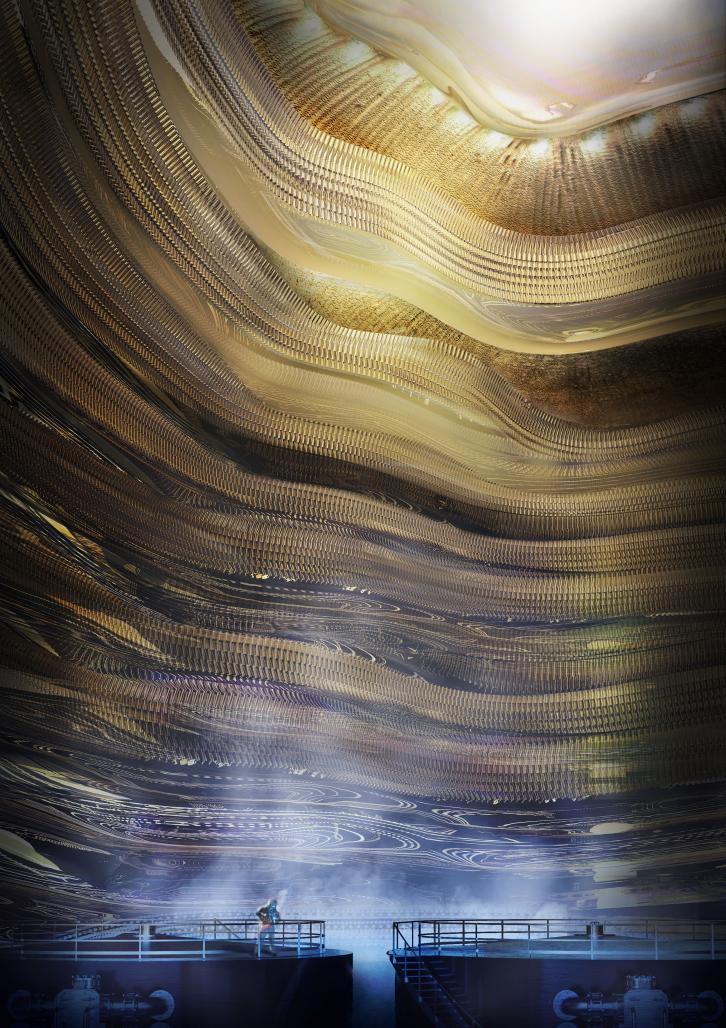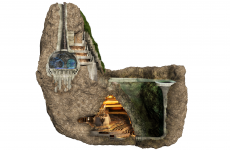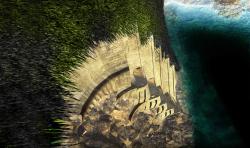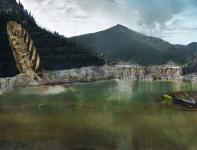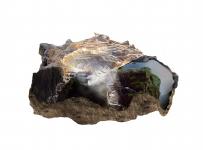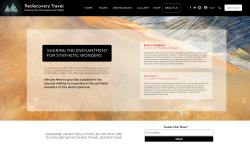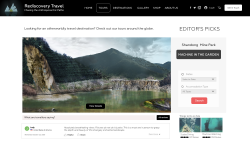Humankind has been profoundly transforming Earth’s crust, leaving behind irreversibly disrupted lands. These hybrid landscapes not only reflect the blind greed of humans, but also present some of the most haunting vistas.
With its deep quarries and terraces, the Zibo Mining District in China is among the scarred landscapes of the Anthropocene affected by heavily industrialized mining operations. The site is in in need of ecological, social as well as economical restoration.
The traditional restoration approach of industrial areas considers ecosystems and constructed environments as detached entities that can be restored in isolation from each other. In opposition to this archaic approach, “Rediscovery Travel'' embraces the collaboration between natural and artificial processes that shape our epoch’s landscapes. Local ecosystem, mining techniques, agriculture, tourism, local economy… all contribute to the transformation of this large-scale defunct industrial area into a newly potent environment through the lens of a travel agency. The introduction of new programs such as a water filtration facility and a nuclear plant aren’t at the focus of the revitalization efforts, but rather how these new functions can be seamlessly integrated within the complex fabric of the site. The strange aesthetic emerging from hybridizing the natural and the synthetic offers an alternative travel destination to newly envisioned sites of the Anthropocene and generates opportunities for a new life.
2020
2020
The aboveground and underground spaces created during the mining operations are adapted to the new programs introduced to the site. This allows for the repurposing of abandoned mines and the mining infrastructure with respect to the needs of the Zichuan District.
A mining pit filled with water is used as a water reservoir, which is connected to an underground water filtration facility. With its majestic spatial qualities and its golden-colored cladding, this facility not only supplies the area with clean water, but also attracts enthusiastic travelers from all around the world. The specific marks left by the excavators inspired the layers of golden-colored stainless steel cladding in the proposal for the water filtration facility, which helps sustaining ideal air conditions for the filtration facility equipment.
Considering the enormous scale of the underground mines and the need of for energy in the area, the largest mine is converted into a nuclear plant. The underground spaces and the abandoned infrastructure at hand, such as ventilation shafts, tunnels, elevators..., provide a great opportunity to be repurposed as an underground nuclear plant and thus, reduces the immense costs needed for such a facility. The plant is well integrated within the area, which uses filtered water from the water filtration facility for cooling purposes, and supplies the local industry with electricity.
A vast open mine pit is reinforced with retaining walls constructed from reinforced concrete and steel cables. This allows for accessibility of the mine pit by travelers, who can experience this hauntingly beautiful view. The underground circulation system used during mining activities is also accessed through the pit, which connects the mining pit with the water filtration facility as well as the nuclear plant.
Pinar Araci
Jeffrey Szeto
Christopher Maj
Supervisors: Ferda Kolatan, Angela Huang
Favorited 3 times
